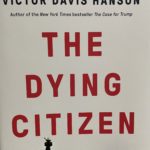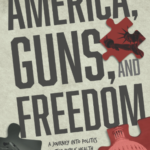Thick Schools
When education reformers say they have new ideas, look at the vintage of their sources.
Kirsten Olson, an educational consultant for the Gates Foundation and the Kennedy School of Harvard University, in her newly released book Wounded by School: Recapturing the Joy in Learning and Standing Up to Old School Culture, reprints what she calls the “Learner’s Bill of Rights” opposite the title page. Among the provisions of this document are such “rights” as “the right to know why they are learning something, why it is important now, or may be important to them someday” and “the right to engage in questioning or interrogating the idea of ‘importance’ above.” But this is not the only “interrogation” the hypothetical student is permitted – he also has the “right to interrogate and question the means through which his or her learning is assessed.”
Olson herself certainly shows no qualms about using this “freedom” in making her argument. The thesis of her book is that too many students in today’s classrooms are “wounded” by a school system which places too high a premium on standardized test scores, grades and other conventional forms of measuring achievement. How is one to tell who is wounded is detailed in the first chapter, where one finds a short list of what school wounds are. This list includes the usual complaints about “losses of pleasure in learning” and about the “belief that we are not smart,” but also includes such seemingly virtuous behaviors as an “overattachment to ‘right’ answers, correctness.”
Olson provides anecdotes from supposedly “wounded” students and their vicariously “wounded” parents to prove her argument. Every student she interviews is either “pretty enough to be a model,” “strikingly handsome,” “reflective,” “exceptionally sensitive” or “bursting with bright, incandescent energy.”
The book is even more notable in what it leaves out. While Olson devotes an entire chapter to “Students Healing One Another” and seems to have unlimited sympathy for underachievers, gang members and drug abusers, one searches the index in vain for a single mention of bullying or “wounding” inflicted on the more gifted members of the student population. This peculiar omission is easily understood the instant one looks at Olson’s prescription for how to solve the “wounds” she does uncover. Olson advocates something called “Democratic education,” which she says “is rooted philosophically in some of the radical educational movements of the 1960’s.” Considering that she admits that the fundamental premise of this “democratic” system is that “society [is] viewed as oppressive and technocratic, and school need (sic) to be constructed as an agent of liberating individuals from it,” one can understand why the book shows scant interest in protecting what this theory probably sees as budding fascists who have the bad taste to do reactionary things like get straight A’s.
But when it comes to “democratic education,” perhaps Olson should have taken the time to interview the five-year-old autistic Alex Barton, whose classmates, with the sanction of their teacher, voted him out of class by a 14-2 margin. Reportedly, Alex was so “wounded” by this event that he cries every time his mother even drives past the school. Yet judging by Olson’s sympathies, perhaps the only comfort she could offer to Alex is that his back will be the first against the wall when the “healing” revolution comes.
Mytheos Holt is an intern at the American Journalism Center, a training program run by Accuracy in Media and Accuracy in Academia.




